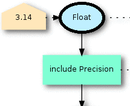 Need a new Ruby or Rails job? They’re getting posted daily on jobs.rubynow.com but we’ve got 8 special ones of our own that have come in via the Ruby Inside jobs board. Jobs this month come from the United Kingdom and the US and, as is proving typical, are Rails heavy.
Need a new Ruby or Rails job? They’re getting posted daily on jobs.rubynow.com but we’ve got 8 special ones of our own that have come in via the Ruby Inside jobs board. Jobs this month come from the United Kingdom and the US and, as is proving typical, are Rails heavy.
Ruby on Rails Developer (San Francisco, California)
SideReel is a fast-growing Web site with millions of users that aims to be the center of the online TV world! They are looking for an experienced Ruby on Rails software engineer to help build a community-based site focused on helping people find entertainment online. Read More







 Following on five months after the release of the popular JRuby 1.4, the
Following on five months after the release of the popular JRuby 1.4, the 


 In the UK there’s a cliché that goes: “You wait hours for a bus, and then three come along at once!” So it went with these three Ruby date and time libraries. They all made an appearance on
In the UK there’s a cliché that goes: “You wait hours for a bus, and then three come along at once!” So it went with these three Ruby date and time libraries. They all made an appearance on  When you want to inspect your objects in Ruby, Object#inspect, p, or
When you want to inspect your objects in Ruby, Object#inspect, p, or 



 The latest installment of our series of roundup posts, covering some of our latest findings in the world of all things Ruby. These items wouldn’t make it in as separate posts, but they should be of enough interest to Rubyists generally to make it a worthwhile browse for most readers.
The latest installment of our series of roundup posts, covering some of our latest findings in the world of all things Ruby. These items wouldn’t make it in as separate posts, but they should be of enough interest to Rubyists generally to make it a worthwhile browse for most readers. Three years after Microsoft first announced it was dipping a toe into the Ruby implementation waters,
Three years after Microsoft first announced it was dipping a toe into the Ruby implementation waters, 
 Hot on the heels of
Hot on the heels of 
